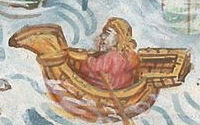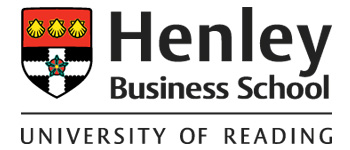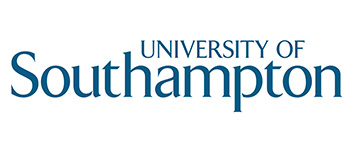Robert Hull 'shipman'

• New insights from Gascon Rolls Project
• Attack on Abbey near Tower of London
Friday 10 January 2020 is an exciting day for the 'People of 1381' team as it marks the launch of the Gascon Rolls Project (1317-1467), directed by one of our co-investigators, Professor Anne Curry: www.gasconrolls.org. The Gascon Rolls Project offers many further possibilities for using online linking and data mining to investigate the background of those involved in the revolt of 1381.
The Gascon Rolls document the activities of the English administration of Aquitaine in south-western France. Already, preliminary use of the online Gascon Rolls has revealed surprising new information about the people of 1381. For example, among the victims of the revolt was Richard Imworth, the keeper of the King's Bench prison in Southwark, described as by the Anonimalle Chronicle as a 'tormentor without pity', who was seized by rebels in the sanctuary of Westminster Abbey and beheaded. The Gascon Rolls shed light on Imworth's earlier career by revealing how in between 1363 and 1375 he was involved in the forcible commandeering of mariners and ships in the south of England for the king's service in Gascony. This may have contributed to Imworth's unpopularity in 1381. Here are links to the relevant entries concerning Imworth in the online Gascon Rolls:
http://www.gasconrolls.org/en/edition/calendars/C61_75/document.html#it075_36_01f_128
http://www.gasconrolls.org/en/edition/calendars/C61_75/document.html#it075_36_01f_128
http://www.gasconrolls.org/en/edition/calendars/C61_82/document.html#it082_43_09f_045
http://www.gasconrolls.org/en/edition/calendars/C61_88/document.html#it088_49_04f_060
Among the most intriguing revelations in the Gascon Rolls for students of the 1381 revolt is further information about a sea captain called Robert Hull who took part in the rising. It was alleged that on 14 June 1381, Robert Hull 'shipman' together with Nicholas Witley, John Painter, a draper from London, and men from Essex and Kent entered the Abbey of St Mary Graces near the Tower of London and forced the Abbot to agree that one of the monks would give them possession of properties of the Abbey in London (KB 27/483 rex mm. 8d, 9, 15d; Réville, p. 215 No. 56; Powell & Trevelyan, p. 17). It was also claimed that the Abbot was assaulted and books, charters and muniments of the Abbey torn up (KB 136/5/5/2/2). Hull was pardoned for his participation in the rising on 20 January 1382.
Robert Hull was a veteran seaman in royal service. The Medieval Soldier Database and the Gascon Rolls Project assist us in reconstructing his career. In 1355, Hull is described as the master of the King's ship 'La Isabelle' and was authorised to impress thirty mariners (CPR 1354-8, p. 281; Cooper, Materials for New Edition of Foedera, p. 14). In 1350 'La Isabelle', based in King's Lynn, had been one of the ships used to provision Henry de Grosmont during a campaign in Gascony. In 1357, Robert Hull went to Flanders in 'La Isabelle' to arrange the purchase of a 'great cog' called 'La Trinite' for the king's service which he and his mariners brought back to England (CCR 1354-60, p. 381).
The Gascon Rolls record letters of protection for Hull while he was in Gascony in the King's service on various occasions between 1364 and 1367. Here are links to the entries relating to Hull in the online Gascon Rolls:
http://www.gasconrolls.org/en/edition/calendars/C61_77/document.html#it077_38_02f_043
http://www.gasconrolls.org/en/edition/calendars/C61_77/document.html#it077_38_01f_064
http://www.gasconrolls.org/en/edition/calendars/C61_79/document.html#it079_40_15f_005
http://www.gasconrolls.org/en/edition/calendars/C61_79/document.html#it079_40_05f_119
http://www.gasconrolls.org/en/edition/calendars/C61_80/document.html#it080_41_02f_047
Hull's loyal service brought rewards. In 1363, the king granted Hull a property close to the Tower of London (probably to be identified with Bayning's Quay) (CPR 1361-4, p. 434; Survey of London). In 1368, Hull was given a fishery in Scotland (Rotuli Scotiae, i, p. 925; ii, p. 12; CPR 1367-70, p. 159). The Medieval Soldier database records further naval service by Hull in 1371, and in 1373 he was apparently a member of the Duke of Brittany's retinue in John of Gaunt's expedition to France. Robert was also one of the sureties for the captain of the 'Paul of London', the ship sent by the city of London on this expedition (Riley, Memorials). In 1371, Hull had goods worth more than £40 in London (Cal Plea and Memoranda Rolls 1364-81, pp. 133-4).
Why should a wealthy man like Robert Hull who had prospered in the royal service join the uprising in 1381? By attacking the Abbey of St Mary Graces, Hull was turning on a powerful neighbour. The precincts of the recently founded abbey of St Mary Graces stood close to Hull's property, comprising lands to the east of Tower Hill and St Katharine's Hospital and to the south of the present Royal Mint Street, an area of desolate mudflats where the monks undertook extensive reclamation works, which were probably already in progress by 1381. This reclamation would have affected the use of nearby properties, and may have annoyed their owners. The monastery also rapidly acquired small pieces of land in this locality after 1369.
Both Hull and Witley were neighbours of the Abbey and apparently resented its property acquisitions. Witley was to serve as a common councilman for Tower Ward in 1384 (Cal Plea and Memoranda Rolls 1364-81, p. 85). Hull and Witley were among a long list of local residents accused in 1372 of dumping refuse, filth and fetid matter on Tower Hill, causing a health hazard there (Cal Plea and Memoranda Rolls 1364-81, p. 140).
It may be tempting to dismiss this incident as an opportunistic local event, unconnected with the main political thrust of the rising, and somehow to suggest that Hull and Witley were not true rebels. But at the time they attacked the Abbey of St Mary Graces, rebels were overrunning the Tower of London immediately nearby. Simon Sudbury, Robert Hales and other royal associates were being beheaded on the very spot that Hull and Witley had been using as a rubbish dump. The indictment against Hull and Witley states that they entered the abbey with rebels from Essex and Kent with banners displayed. If documents were destroyed, this also indicates sympathy with the protests of the rebels against documentary bureaucracy.
At the heart of the rebels' motivation was a demand for justice, fed by animosity against what was perceived as the corruption and oppression of royal and other officials. The awareness that the rebels included many soldiers and sailors, some perhaps former comrades, may have encouraged veteran of royal service such as Hull to join the clamour for justice.
Hull was still alive in 1386 when he agreed to the transfer of his Scottish fishery (SC 8/223/11111). The Medieval Soldier database suggests that he served as a man-at-arms in Sir John Calveley's retinue in the Earl of Arundel's naval expedition against the combined Flemish, French and Spanish fleets in 1387. Witley was pardoned on 1 February 1382 (KB 27/483 rex m. 15d) and John Painter found not guilty (KB 27/483 rex m. 9).
Further Reading
A. J. Prescott, 'Londoners in the Peasants' Revolt: A Portrait Gallery', London Journal 7 (1981), pp. 125-43.






